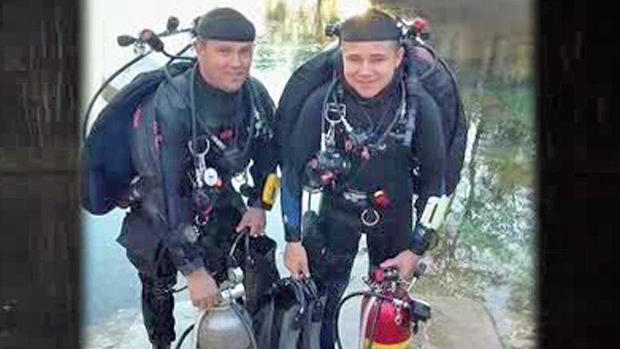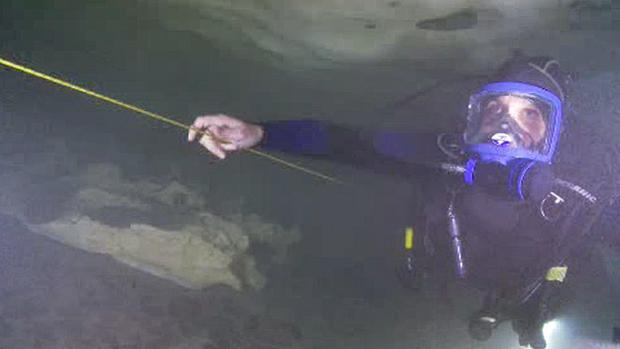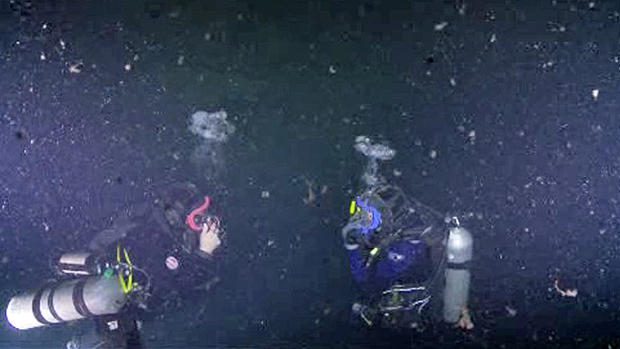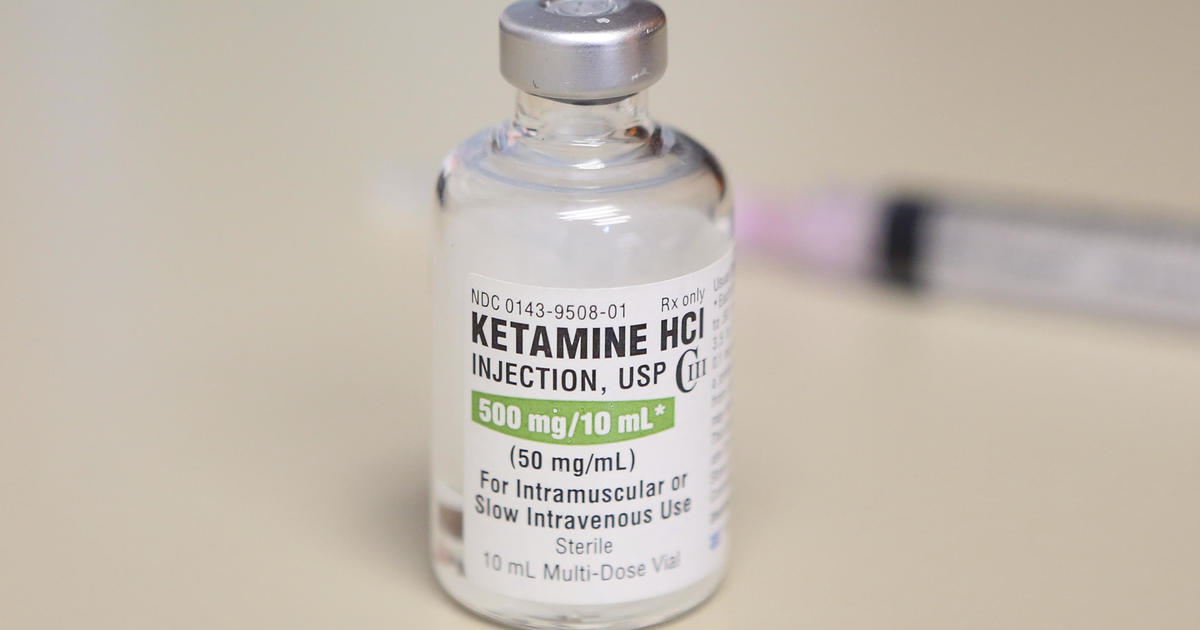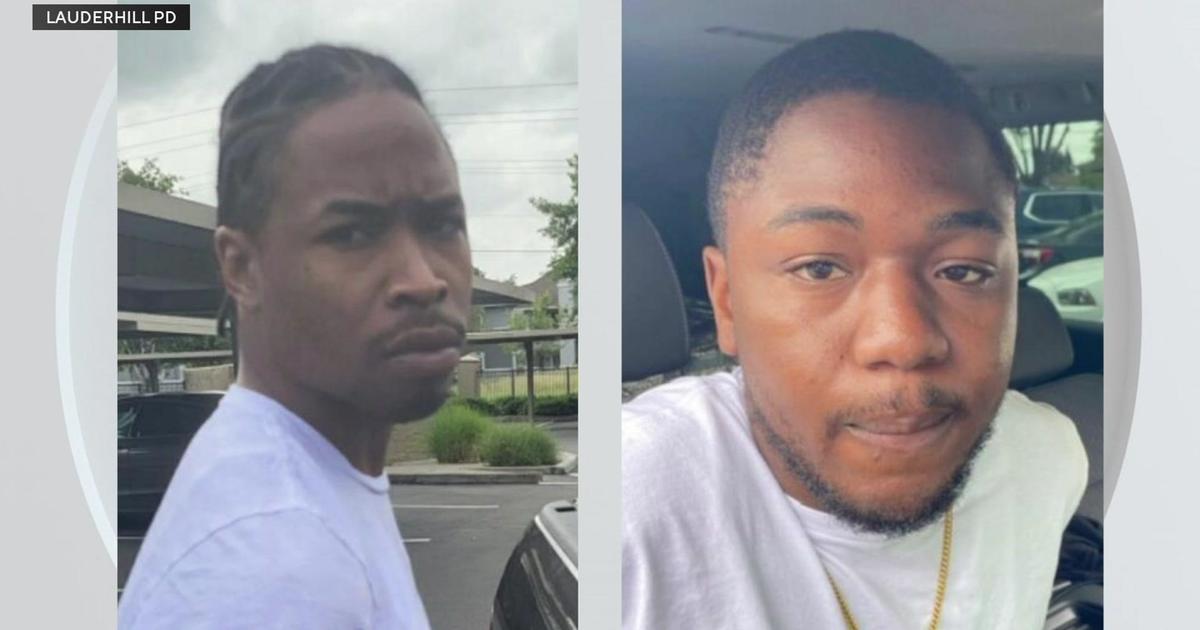Caves: A Christmas Day Tragedy
Over six months, our special projects unit studied the industry extensively. We took cave diving classes and even dove into a number of caves. We set out to take our viewers closer to the sport than ever reported, by being the first television news station to go into caves. It meant putting the reporter and photographer through all the paces. The end result was a better understanding of the sport in all aspects of reporting, shooting, and editing.
This report takes you inside Eagles Nest. It's located in Central Florida, just North of Tampa. This past December a father and son went there. Their Christmas morning adventure would become a Christmas day tragedy reported around the world. The two made a series of serious mistakes that cost them their lives. With South Florida being the diving capital of the world, it's a story many of our viewers should see. It may just save your life.
The Christmas Morning Tragedy
A Facebook video shows life in early December for Darrin Spivey. The father is horsing around a living room with his children. His youngest son is straddled on his back as Spivey shakes around acting like a bull. The boy laughs as Dad rocks back and forth. Spivey's daughter runs around the room wildly giggling as well. On the couch Spivey's oldest son Dillon laughs. It was happy moment. Neither Dillon nor his father knew it would be one of their last.
On Christmas Eve, Darrin had given his 15-year-old son double scuba diving tanks. They both are so excited to use them that they make a plan to leave at daybreak, Christmas morning, to use them. Dillon's step-grandmother, Paula Thomas, told CBS4's David Sutta that her grandson had reservations about it. He told her "I'm going to tell my dad I don't want to go diving." Thomas, who declined to be interviewed on camera, said her grandson wanted to stay with her Christmas day. She said Dillon adored his dad though and in the end couldn't tell him he didn't want to go.
Christmas morning they went to a nearby cave but it was too difficult to get in. So they drove miles into a Chassahowitzka Wildlife management area. The state park is open year round to hunters, hikers, birders, and divers looking to drop into a place called Eagles Nest. Matt Vinzant, a certified cave diver says they had everything they needed to do the dive. "Double tanks, 7 foot hose, canister lights. They looked the role." Vinzant said. The only thing missing was the training. Eagles Nest was far advanced than either diver could have imagined. "Everyone calls it the Mount Everest of cave diving. So that by itself is a huge draw. It's deep. It's dark. One of the deepest caves in Florida. And it's easily accessible." Vinzant explained.
As Darrin and his son geared up, a hunter going through the state park spotted the two. He would be the last one to see them alive. It was just after 10:30. Darrin sent a text to his fiancée they were going in. He wrote he would call when he was out. They then went right past signs warning them of the danger before them. Vinzant believes nothing would have turned them around. "They went there with the intent to dive. I don't think 20 signs would have mattered."
As the sun set in the afternoon Holly King became worried. Her fiancée should have called hours ago. He wasn't picking up his phone or responding to her texts. She decided to get in the car with her father to check on the boys. As they drove out to the state park a cave diver told her over the phone if their car is still there it is not a good sign. It would mean they were likely still in the cave, way overdue. Sure enough as they pulled up Darrin's Dodge Neon was there, locked up. No sign of either father or son.
Certified diver Robert Brooks, who had warned about the car still being there as a bad sign, was the person who called 911. "The last time anyone heard from them was around 10:30 this morning." he told the operator. Over 12 minutes he went back and forth directing the operator and the sheriff's office to the site buried deep down a dirt road. He spoke as if he had no doubt that both father and son were dead. Darrin's locked car. Gear missing. Amateur cave divers. He had seen this before a few years earlier at Eagles Nest. History had repeated itself. "The victims don't have cave experience but unfortunately they chose to do a cave dive today and took their life." Brooks told the operator. The 911 operator sympathized wondering why inexperienced divers keep going in there.
WHAT WENT WRONG
Darrin Spivey was only certified to dive in the ocean. His son was not certified to dive at all. Although his family told us they studied and practiced considerably. Thomas said her 15-year-old step-grandson had been studying and doing dives in Beaufort Springs. Both father and son were "all about safety" Thomas said. Dillon had aspirations to become a Navy Seal. He was a good, loving, respectful child by all accounts. He was into church and ROTC. Thomas told us despite Darrin's good intentions "Dillon should have never been near Eagles Nest." She knew about the cave and knew about the risks. But it didn't matter what she thought. Ultimately Darrin was going to do what he wanted to do.
"I could really relate to them. I was cave diving with my dad when I was 15 years old." Vinzant, the cave diver, said. Vinzant would be one of the divers sent in to rescue them. Just inside the entrance he found a body. "He was found at 67 feet on the ceiling. His wing was full. He was buoyant." Vinzant recalled. Dillon was just 6 feet from the opening. Vinzant wasn't surprised. "Most cave fatalities have been within sight of daylight."
Dillon's tanks were empty. He had run out of air. On the bottom, around 130 feet, was Dillon's father. He was at the top of a sand hill, near that very warning sign they had passed earlier. His tank was empty too. Both father and son's gauges showed they had dove more than 230 feet deep. Extremely dangerous, if not deadly, with the air they were wearing. Veteran Cave diver Brett Hemphill believes it was likely a painless death. "If I had to guess his son suffered from some horrible narcosis. And a lot of times you become catatonic and just sit there and go (Hemphill makes breathing noises). You are in a state, am I home dreaming in my bed? You are 230 feet underwater."
The investigation done by the Hernando County Sheriff's office would take for four months. Dillon's mother Anna Mudd-Sanchez would be notified of her son Dillon's death while in the Gadsden Correctional Facility. She was serving a two year sentence for trafficking drugs. Ultimately the medical examiner ruled both deaths were accidental drowning.
In detail Detective Jill Morrell revealed the dad appeared to have given his emergency regulator for his son to breath. Evidence suggests the son made a swim for the exit. He just didn't make it. Divers found two FULL emergency tanks next to Darrin. Both had more than 3000 pounds of nitrox mixed air. It was a lifeline that they, for some reason, never took advantage of but perhaps tried. One of the tanks had been unclipped but the regulator was never pulled nor turned on. Vinzant looked back on the night with regret. "Tragic. Father and son trying to do an activity that they both enjoy. And ultimately they got themselves killed." He remembers pulling away from the site that night after pulling both bodies out. He kept thinking over and over what could have gone wrong. How could this tragedy have been avoided. As a father the day has changed him.
Hemphill found the whole situation regrettable. A father himself he was sympathetic. As a cave diver he was disturbed. He knew the media would run with the story, painting Eagles Nest in a dangerous light. He felt compelled to speak out. He stepped in front of television cameras and newspaper reporters to speak about it. He tried to explain it wasn't the cave that killed them. It was their inexperience. Hemphill told Sutta, "The accessibility and the depth that you get into in that place, it's unfortunate. It's like a Venus flytrap. It just looks so inviting." he said. Video taken a few years ago showed what that looked like. From expansive caverns to tunnels that go on and on - Eagles Nest is stunning. Each turn revealing something even more beautiful.
A HISTORY OF MISTAKES
The beauty of Eagles Nest has attracted a number of divers. While no one knows just how many have dived the cave we do know how many have died. Since 1981 eight divers have died exploring this wonder, including the latest two on Christmas Day.
#1 & #2 December 1981
29-year-old Terri Collins of Gainesville went into Eagles Nest with her husband. Sinking 265 feet deep on just air experts believe she likely experienced nitrogen narcosis They were deep inside a tunnel when he asked her if she was okay using a hand signal. She responded yes. She was holding on his leg during the whole trip. Seconds after giving the okay signal though she let go of him. He turned back and saw the regulator out of her mouth. He tried to shove it back in and found her unconscious. The husband swam for help at some point losing sight of her. He came up to 70 feet and found Jim Bentz taking pictures. Bentz was a certified diving instructor and rescue diver. The husband communicated his wife was in trouble. Bentz went down on a single tank to try and attempt a rescue. He never resurfaced alive. Rescuers found him floating at 250 feet. Friends mentioned Bentz had becoming increasingly concerned about the danger in cave diving and had been thinking about getting out.
#3 August 5, 1990
29-year-old Brent Potts of Tallahassee was a certified dive instructor who completed an intro to cave diving course. Rescue divers found his body 195 feet deep. He had had blackouts over the year but kept them a secret from his diving partners. Friends believed he had blacked out ultimately leading to his death in Eagles Nest.
#4 & #5 June 16, 2004
36-year-old John Robinson of St. Petersburg and 44-year-old Craig Simon of Spring Hill were experienced cave divers. Robinson had been certified to dive caves for a decade. Simon for about two years. Robinson used a scooter to get deep into the cave. At some point a silt out happened causing them to lose the guideline out of the cave. Robinson dropped his scooter and when he found the line he continued down the line, presumably thinking he was exiting. In reality he was headed deeper. It is presumed he eventually ran out of air and drowned.
Meanwhile Simon moved down the line as well and was found tangled in his own emergency line wrapped around his hands, fins and equipment. Experts believe Simon was using a technique used to find a lost line. Based on the gauges, computers, and available gas they had it is believed they had 20-25 minutes to resolve the situation. It took two days for six teams of divers to find Simon in the cave. One recovery diver got the bends and had to be transported to the hospital.
#6 November 3, 2009
39-year-old James Woodall II of Richmond Kentucky was a certified PADI open water diver. He had been certified to use a re-breather as well. He went down with 34-year-old Gregory Snowden. They were attending a dive show in Orlando and decided to make the day trip to dive the site. Woodall knew about the cave because he had done training at the site to use nitrox tanks. It's unclear if he passed that course. Snowden said they were 270 feet deep when Woodall had trouble with his re-breather. Snowden tried to help but was pushed away as Woodall panicked. Woodall drowned.
Near Death September 2005
48-year old Judi Bedard had dove Eagles Nest a dozen times. It's unclear if she was certified at all. She was diving with her boyfriend when she had an air issue at 130 feet. By the time he brought her to the surface she was unconscious. At the surface Bedard was resuscitated. She would spend two months in the hospital in a coma. There was little expectation she would live. She would prove doctors wrong. After she came out of the coma, she did rehab, walked, and returned to diving.
EXPERIENCING EAGLES NEST
Vinzant recalled Eagles Nest's history steering him away years ago. "I was cave diving for 6-7 years before I went to Eagles Nest for the first time. I was told everyone that's not trained dies in that hole. So that scared me away." And the scary starts the moment you pass from the lake, down a hole into what they call the ballroom. Veteran diver Brent Hemphill described it as "You are out there and your floating in this enormous abyss." Vinzant added "You can't see one side of the cavern or the other. You are trying to follow this little bitty guideline through a football stadium. If you lose that line it could take you, forever, to find it."
It's easy to get lost and it's easy to run out of air. Cave divers use a simple plan to avoid dying here. They use one third of their gas for the dive. The rest is to get out. Vinzant explained "At 60 feet that third may last you an hour. At 200 feet that third may last you 12 minutes. You can solve a lot of problems in an hour. You can't solve as many problems in 12 minutes."
Just to bring you inside Eagles Nest it took three days of training and quite an experienced crew. We had an experienced cave diving shooters along with enough lights to light up a warehouse. To report we wore full face masks which allowed the crew to speak to each other.
As we sank through a solution tube Hemphill came over the radio "You can see there is just one way in and one way out." He pointed down toward the bottom. "It's really amazing. Below you is pitch black." he said. Even with all the lights we still couldn't see wall to wall or the bottom. You could equate it to outer space. Eerie vast emptiness.
GALLERY: CAVE DIVING: BEYOND THE LIMIT
Sutta looked back at Hemphill and radioed "There is really no way to gauge your distance without your dive computer telling you where you are." It was clear to Sutta in that moment, unknowingly, you could sink to depths that could kill you. "In every direction in this cavern it drops below 200 feet." Hemphill responded. They stopped at 100 feet... never seeing the bottom. Sutta asked Hemphill "What is the mistake that the open water divers make when they come in here?" He responded "Once you past through that threshold in the ceiling you are well beyond the training limits of any open water diver, including an instructor." It's a tragic lesson a father and son had to learn... on Christmas day. Vinzant shrugs his shoulders as he thinks about it. "Their family had to find out on Christmas night they had lost a brother. A son. A grandson. It's a rough night. I'll remember that every Christmas forever." he said.
THE FALLOUT
In the wake of the Christmas day tragedy, the Florida Fish and Wildlife Commission, which maintains the Eagles Nest site, is taking a closer look of what can be done. Most of the discussions have been about awareness campaigns and perhaps a check-in program at Eagles Nest. There is no discussion about closing the site down. A public records check by CBS4 revealed just one person has asked the site be closed. Dillon's grandfather. The majority of FWC correspondence has been from the cave diving community concerned about media reports FWC was considering shutting down the cave site.
FWC Regional Director Thomas Graef oversees the Eagles Nest site. He considered creating some sort of reporting program. The thought is they want divers to notify them of when they come and what they do. The notifications would be the first data collection for FWC has on who's using Eagles Nest, how often, and perhaps paint a clearer picture of the real risk the site poses. Graef acknowledges that notifications will do nothing to prevent deaths. He appears to be leaving that to an awareness campaign, spear headed by the industry. He pointed out FWC cannot afford to put a ranger at the side. A decision on what to do will be made in the next several months.
Thomas, Dillon's step-grandmother has not asked for the site to be closed. Rather she has asked the state to pursue child neglect and/or child endangerment charges against anyone who takes a child cave diving. She believes if the penalty was there Darrin might have thought twice about taking his son. Five months after the tragedy Thomas says she is still overwhelmed. She says she will never get over what happened.
It should be noted the cave diving industry is self-regulated, like rock climbing or downhill skiing.
To read more about series on Florida caves we invite you to click on David Sutta's personal blog on this subject.
Watch Cave Diving: Beyond The Limit Part Two, A Christmas Day Tragedy, click here.
Click here for behind the scenes and underwater photos of Cave Diving: Beyond The Limit.
